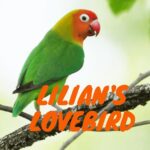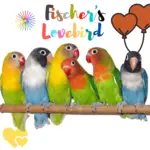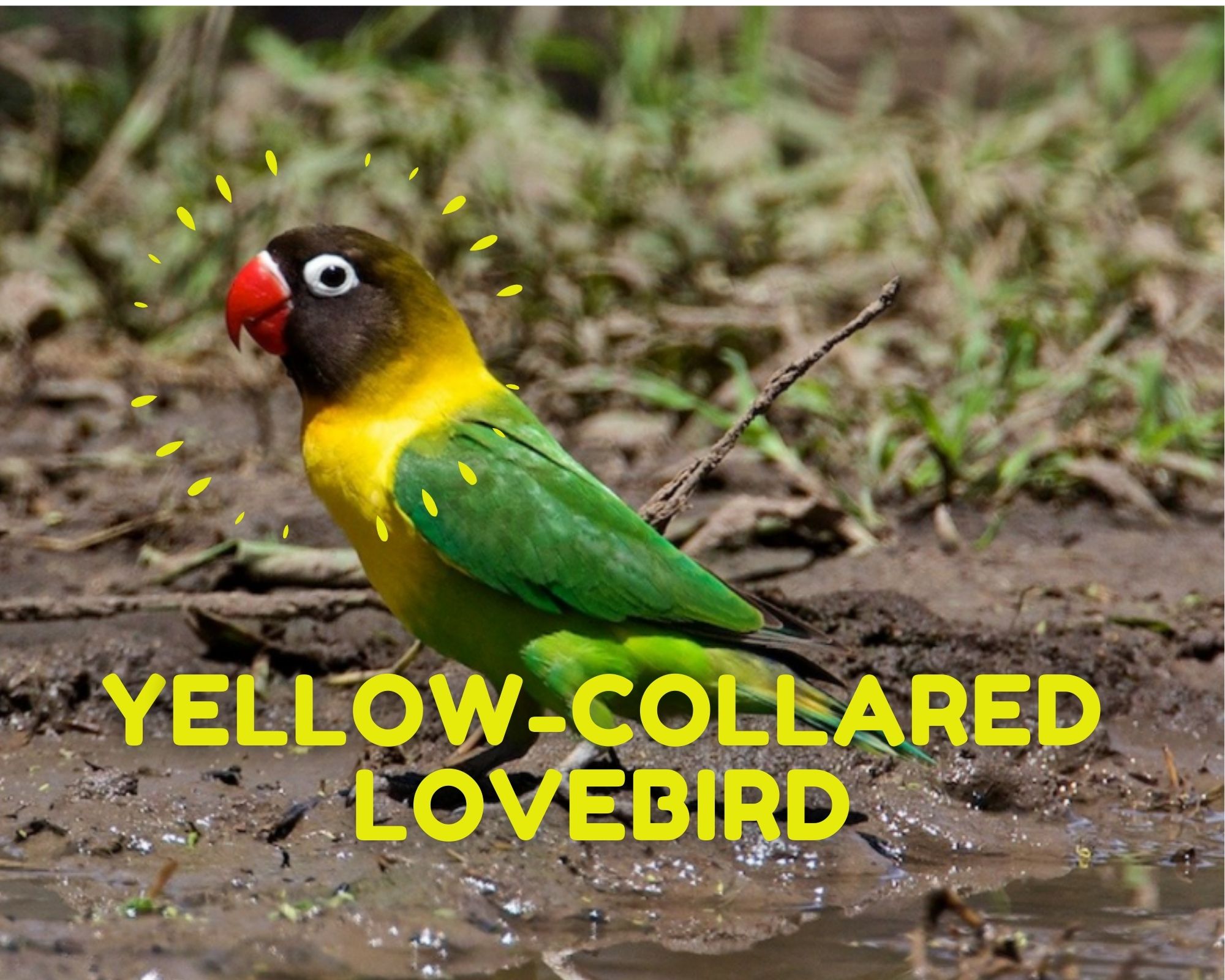
Yellow-collared Lovebird 13–15 cm; 43–47 g. Head blackish brown with red bill and white eye-ring; breast yellow extending as collar onto nape; belly, wings, and tail green, all but central tail feathers can be subterminally marked in orange and black but individually variable. Immature duller on the head.
Systematics History
Sometimes regarded as conspecific with A. Fischer, but the two do not interbreed where naturally sympatric (although were introduced at L Naivasha and a few other highland sites in Kenya, these two taxa have formed stable hybrids);
on occasion lumped also with A. lilianae and A. nigrigenis; perhaps best considered to form a species-group with all three. Monotypic.
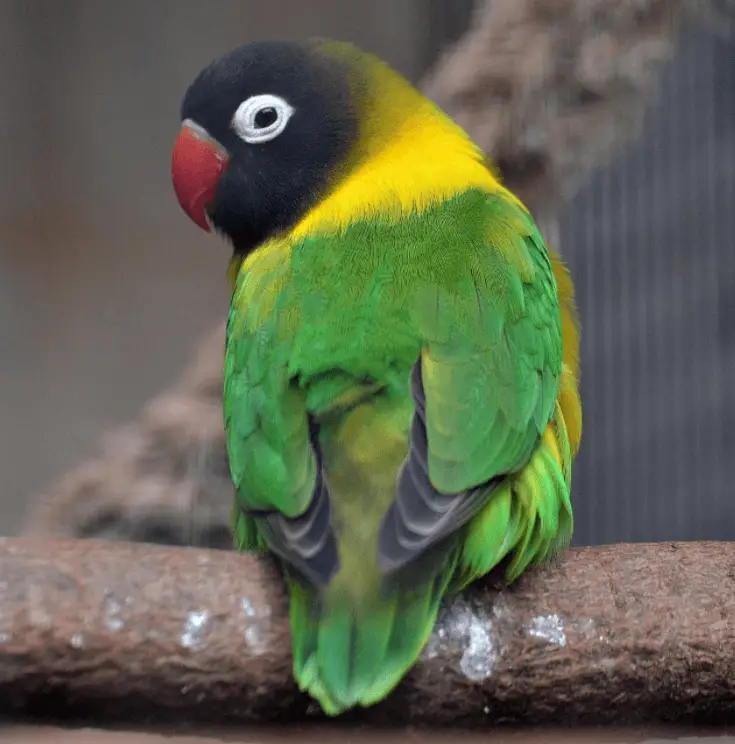
Subspecies
Monotypic.
Distribution
N & C Tanzania. No evidence of natural occurrence in Kenya, although the ecological barrier is unclear, and feral populations exist in Kenya (Mombasa, Nairobi, and L Naivasha), as well as in Tanzania (Tanga and Dar es Salaam), some mixed and hybridizing with A. fischeri. Overlaps with A. fischeri in N Tanzania (from S of L Manyara S to Babati).
Habitat
Well-wooded bushland, Acacia thorn scrub, especially with scattered baobabs Adansonia, to which particularly partial, at 1100–1800 m. Avoids miombo woodland.
Movement
Sedentary.
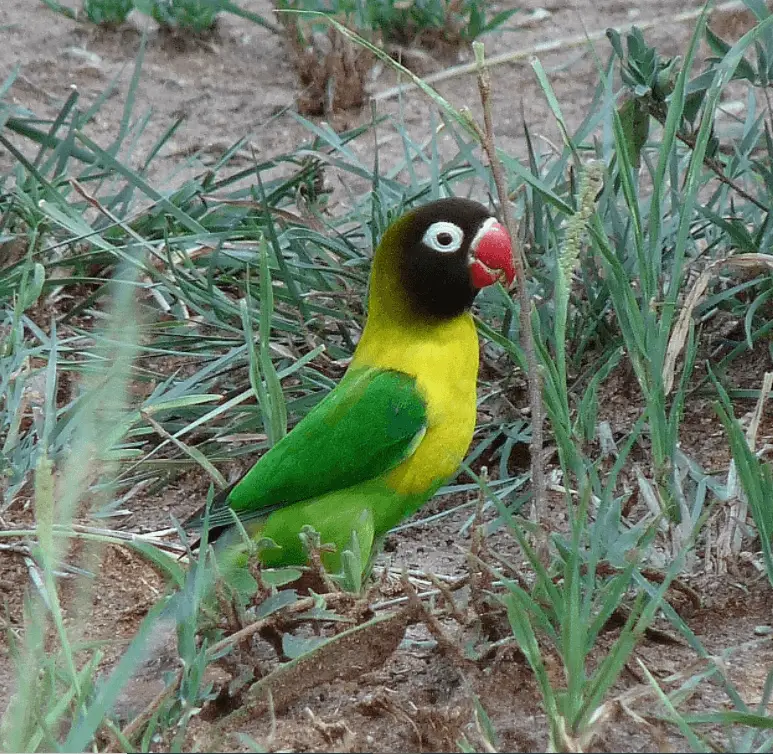
Diet and Foraging
Yellow-collared Lovebird Diet is very poorly known. Seeds of grasses and millet are recorded, and feral birds eat Cassia seeds and those of weeds on lawns.
Sounds and Vocal Behavior
The commonest vocalization of Yellow-collared Lovebird is a screechy “krreek” or a disyllabic “chi-reek!”. When perched, utters a wide variety of chirruping and screechy notes, also more squeaky and nasal notes. Large flocks maintain continuous twittering. No clear differences between A. fischeri, A. lilianae, and A. nigrigenis.
#angrybirds #musklovebird || yellow collared lovebird or black masked lovebird
SOURCE: ANGRY BIRDS bd pet shop
Breeding
Mar, Apr, Jun, Jul, and Aug, i.e. mainly in dry months. Yellow-collared Lovebird Nest is a bulky structure of long stalks and strips of bark, in cavities of trees, especially Adansonia; feral populations use eaves and apertures used by other urban birds. In captivity: 3–8 eggs; incubation, by female only, c. 23 days; nestling period c. 44 days.
Details about Wild mask lovebird| yellow collared lovebird| price in India| diet, care n breeding
SOURCE: Animal Jagat
Conservation Status
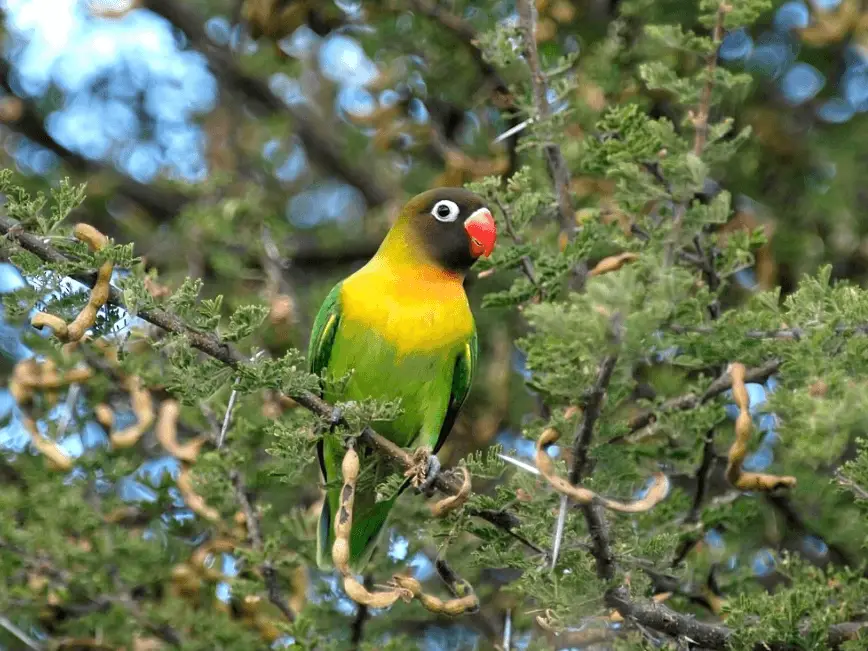
Not globally threatened. CITES II. Locally common, and generally fairly so. Recorded from Tarangire (common) and Ruaha National Parks. The hybrid population at Lake Naivasha comprised some 6000 individuals in 1986.
10 Beautiful Moment Of Yellow Collared Lovebird-New(HD)
SOURCE: Amazing Top 10

